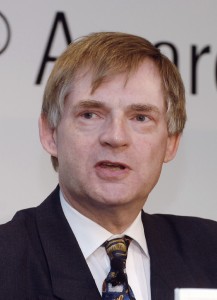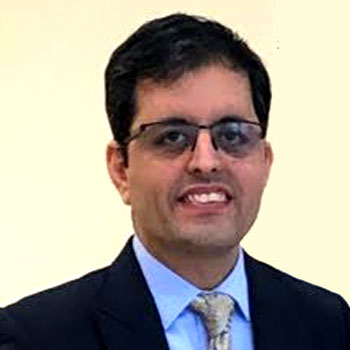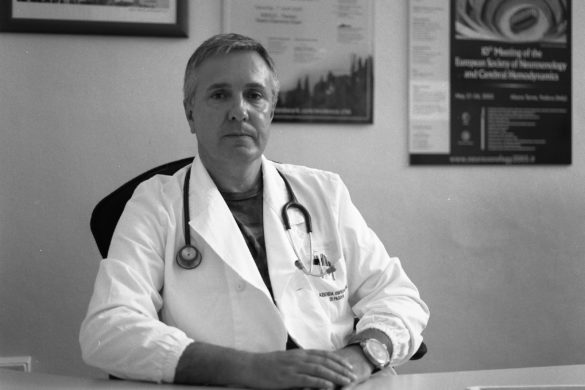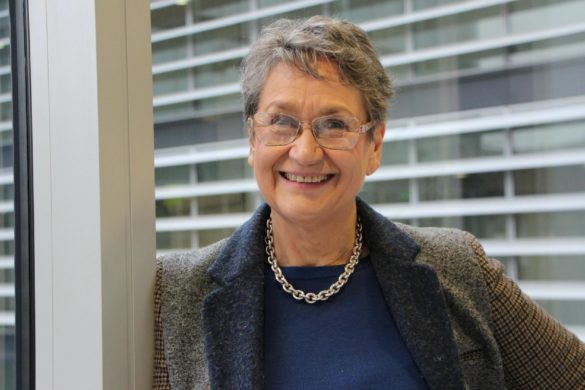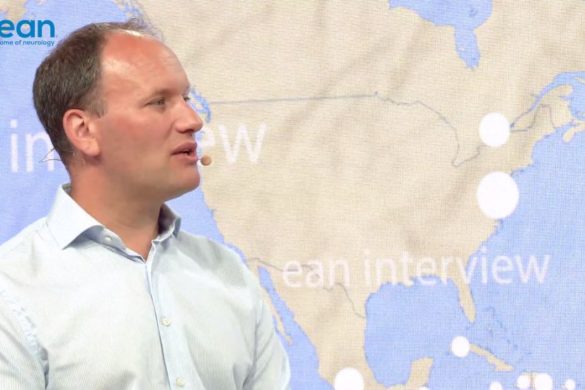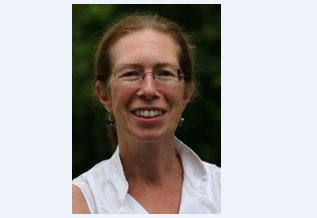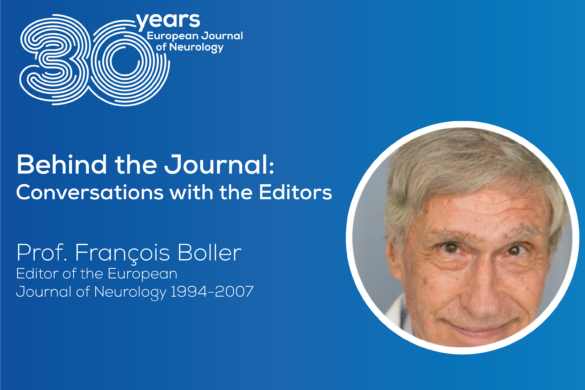Gian Luigi Lenzi (GLL): Headache is one of the more/most frequent reasons for a patient to visit a hospital or emergency room. Would you agree with this statement?
Timothy Steiner (TS): The Global Burden of Disease Study 2010 (GBD2010) established tension-type headache and migraine as the second and third most prevalent disorders in the world (after dental caries) and migraine as the seventh-highest specific cause of disability. It may not be surprising, therefore, that headache is one of the most frequent reasons for medical consultation in both primary care and neurological practice in almost all regions of the world, a message clearly expressed in Atlas: Country Resources for Neurological Disorders, published jointly by WHO and WFN in 2004. Yet headache ought not to be a frequent cause of visits to hospital and certainly not to the emergency room. The fact that it is in many places indicates a failure of health services to provide effective headache management in primary care.
GLL: Could you give Neuropenews readers a short overview of the European panorama of headache care?
TS: A short overview would be high need inadequately met by under-resourced and disorganised care. Europe is not alone in this, a consequence of political neglect and lack of awareness of the true cost of headache (see Atlas of Headache Disorders and Resources in the World 2011, published jointly by Lifting The Burden and WHO).
Among every million people, about 120,000 adults and 15,000 children, by a conservative estimate, have need for headache care in the sense that they would benefit from it. These large numbers are a serious challenge. Lifting The Burden in collaboration with the European Headache Federation has set out detailed proposals for organisation and delivery of headache services in Europe. In a 3-tier system, at least 90% of patients with headache could and should be managed in primary care (level 1). Most of the remaining 10% could be managed by primary-care physicians, better trained and with an interest in headache, or by general neurologists, at level 2. Only about 1% of all headache patients require specialist care in centres at level 3 equipped to manage the most difficult cases, including all causes of secondary headache. To work effectively and efficiently and be able to reach the large numbers of people who would benefit a system of this sort must be formally established with gatekeeper roles at the lower levels restricting access to levels 2 and 3 to those who need it. Regrettably services for headache, if they exist at all, tend to be ad hoc and unstructured. Headache centres at level 3, developed by interested specialists, are inundated with demand for care that ought to be met but isn’t by poorly-established headache services in primary care. Many of those who need level-3 care are pushed out, while many who would benefit from level-1 care find it non-existent, or else ineffective through lack of training of health-care providers. Within the European panorama are a few notable exceptions, but people with headache in Europe (which costs the European economy over €100 billion per year), generally get a bad deal.
GLL: Could you give the Neuropenews readers a brief introduction on how the WHO global Campaign “Lifting the Burden” came into life?
TS: What I’ve described as the European panorama is reflected worldwide. Our awareness of this is the driving force behind the Global Campaign against headache, whose objective is to reduce the burden of headache worldwide.
The original idea for the Campaign was born between me and Professor Jes Olesen over coffee at Geneva airport in December 1995, following a meeting of neurological non-governmental organisations at WHO. The Global Campaign against epilepsy was already launched, but headache was not anywhere in WHO’s list of priorities. I raised the idea at WHO during 1996, and pursued it during the years that followed, encouraged by staff member Dr Leonid Prilipko (sadly now deceased) and later by Dr Benedetto Saraceno, then Director of the Department of Mental Health and Substance Abuse. Headache disorders, we argued, were common, ubiquitous, disabling and largely treatable – all the characteristics that establish priority in public health. Success came through our contribution to WHO’s Global Burden of Disease Study 2000 which, published in the World Health Report 2001, ranked migraine in the top 20 causes of disability worldwide. This was the proof of priority that WHO needed.
Two years later the Global Campaign against headache was established under a 5-year Memorandum of Understanding between WHO, the International Headache Society, the European Headache Federation and the lay World Headache Alliance. When that expired, Lifting The Burden was created as a UK-registered charitable non-governmental organisation to take responsibility for directing the campaign. Lifting The Burden was invited into official relations with WHO by their Executive Board in January 2011, an invitation ratified that year by the World Health Assembly.
GLL: You have been at the forefront of the WHO Global Campaign “Lifting the Burden” for many years. How would you evaluate the impact of such a joint campaign on those living with headache?
TS: Lifting The Burden has focused in these first 10 years on raising awareness. To do this, the scope and scale of the global burden of headache needed to be better known. In 2003, there were virtually no studies in Eastern Europe or the Eastern Mediterranean, South East Asia, Western Pacific and African Regions – occupied by more than half the world’s population. The studies we have engaged in, conducted with standardized methodology in Georgia, Russia, China, India, Pakistan, Saudi Arabia and Zambia, filled the largest gaps and put migraine in the top 10 (rather than top 20) causes of disability in GBD2010. Other studies are ongoing or planned in Ethiopia, Morocco, Sri Lanka, Indonesia, Guatemala and Peru. A global survey of childhood and adolescent headache is being discussed. Meanwhile, the Atlas of Headache Disorders and Resources in the World 2011, published jointly by Lifting The Burden and WHO, surveyed over 100 countries and gave rise to strongly-worded political messages from WHO (for example: “The facts and figures … illuminate worldwide neglect of major causes of public ill-health, and the inadequacies of responses to them in countries throughout the world”). Headache disorders will have their own chapter for the first time in the International Classification of Diseases, 11th edition (ICD-11). Lifting The Burden has developed proposals for headache service organisation (referred to above), methods for assessing headache service quality, management guidelines and a range of management aids aimed at primary care.
What is the impact on people living with headache? I would not be honest if I claimed at this stage to know. Maybe not much yet except that people living with headache can know that the Global Campaign against Headache and WHO are working on their behalf. Knowledge and awareness precede action. Advocacy and political lobbying, persistent and backed up by good evidence, will have an effect in time. Action will follow when and where it can. Our first interventional project was in Georgia, a post-USSR country with poor and fractured health services, including none for headache. At least five headache centres now exist in that country – a change in the landscape. Our population-based burden of headache studies will support interventional projects in Russia, China, India, Saudi Arabia and Zambia, and we will use our service quality evaluation methodology to assess these.
GLL: How do you see the interaction of the EAN and future WHO global campaigns?
TS: Above all the Global Campaign against headache is a partnership. The principal partners are WHO and Lifting The Burden, but there are a very large number of academic institutional and individual partners around the world and of course there are other NGOs involved at local levels. In Europe, the European Headache Federation has been a solid partner in a number of initiatives, but this is an association principally of headache specialists. Headache belongs more broadly to neurology (and, of course, to primary care), and those of us working in headache should not be isolated from those working with similar objectives in other fields. EAN will – if it is willing – become the natural neurological partner within the European objectives of the Global Campaign against headache and should have a role in agreeing what these objectives are. Although I cannot speak for the Global Campaign against Epilepsy, I would foresee a similar role there. The European Headache Federation was one of the original partners in creating the Global Campaign against Headache. If there are to be other neurological campaigns – which could be European rather than global – EAN might help to bring them into being.
GLL: Thank you for your time.
Prof. Timothy Steiner works at the Norwegian University of Science and Technology, Trondheim, and the Imperial College, London, UK, and is also the Director of the Global Campaign against Headache, conducted by the NGO “Lifting The Burden” in official relations with WHO.

